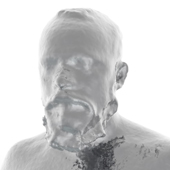The modern world of web design has certainly come a long way since the early days of the internet. From antiquated graphics and rigid structural rules to the user-friendly, interactive designs of today, the evolution of web design has been an incredible journey of constant innovation and creativity. As technology advances, web design continues to evolve and transform, and developers are always eager to push the boundaries of what’s possible. In this article, we’ll take a look at the evolution of web design and how it has changed over the years. We’ll also explore the present day landscape of web design and where the industry is likely to go in the future.
The Beginning: Static HTML and CSS
Web design began with very basic static websites in the mid 1990’s. These bare-bones sites consisted of plain HTML, with limited formatting options for text and graphics. Developers had few tools to enhance visuals or control the user experience, so navigation was mostly left up to the individual site visitors. But as more and more people began to use the internet, developers had to come up with ways of making web design more useful and efficient.
The Early 2000’s: Table-Based Structures and Flash
Developers began to use table-based HTML structures to separate site content into vertical and horizontal sections. This structure allowed for more efficient page layout and control of the user experience. Additionally, developers experimented with animation by utilizing Adobe Flash to add visuals to sites. Unfortunately, Flash’s file size was significant, making it difficult to be used at scale.
The Modern Day: Flexible Structures and Responsive Design
In the mid-2000’s, developers introduced the concept of responsive design. This enabled sites to effectively adapt and scale to any device size, regardless of whether users were viewing the site on a desktop or mobile device. Developers also began to experiment with CSS3 and HTML5, giving them more control over page structure and design elements. Additionally, they were able to control the display of individual page elements, making it easy to achieve an improved user experience.
The Future of Web Design
Web design is certainly heading in a much more progressive direction. Web developers are now able to create amazing visuals with animation, making the user experience more enjoyable than ever before. In addition, AI has been integrated into web design, allowing developers to create personalized experiences for users, tailored to a specific person’s interests or needs. As technology continues to advance, we’ll likely see many more interactive designs and complex animations as developers strive to push the boundaries of what’s possible.
Conclusion
From its humble beginnings in the 90s to the modern era of interactive designs, the evolution of web design has been a remarkable journey. As technology continues to improve, developers will continue to explore and innovate, pushing the boundaries of what’s possible and creating an even better user experience. It’s an exciting time to be in web design, and the future looks even brighter.
